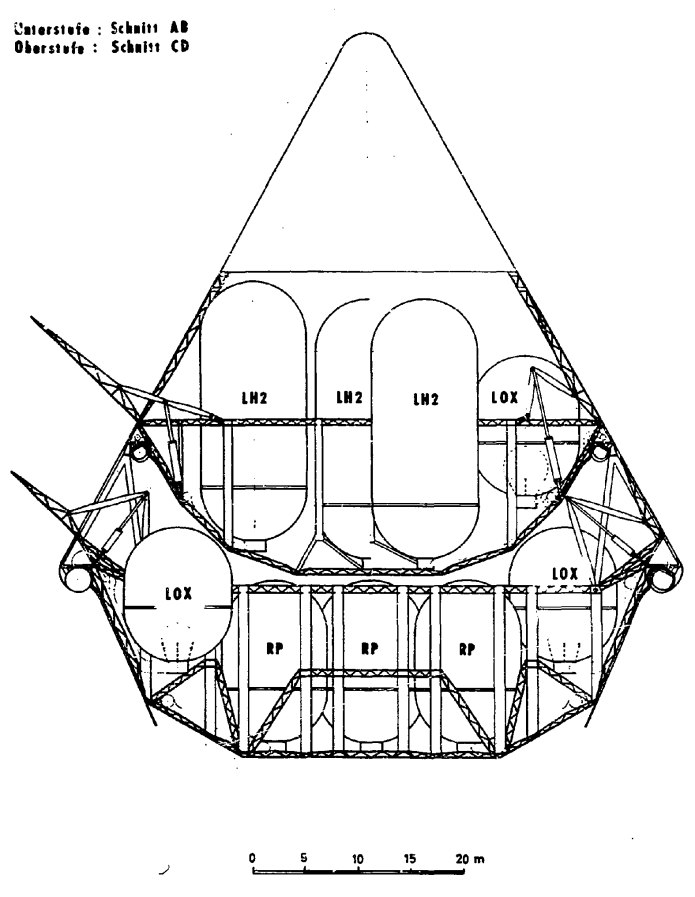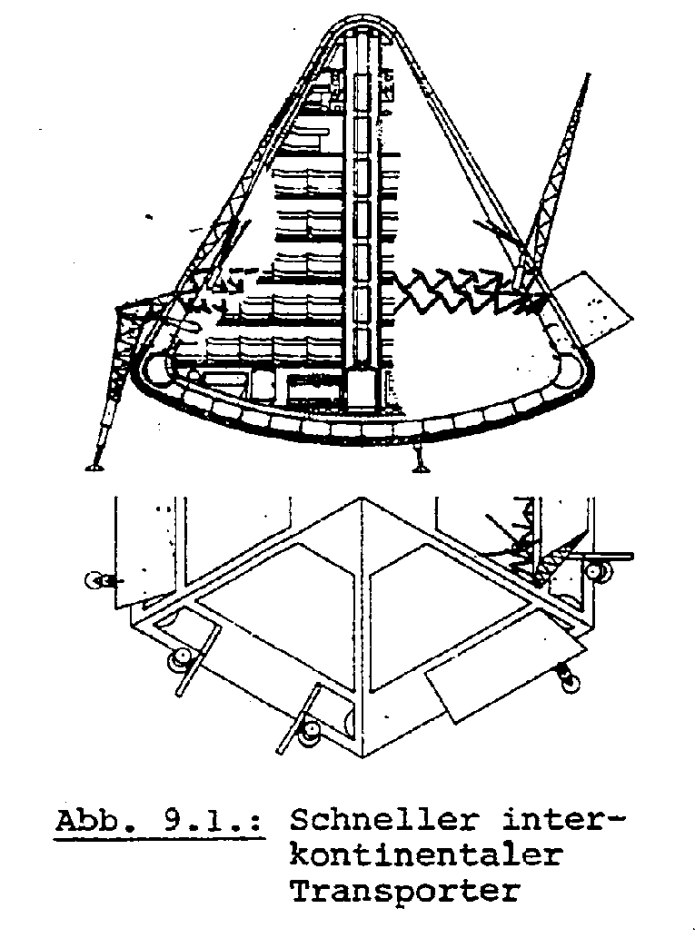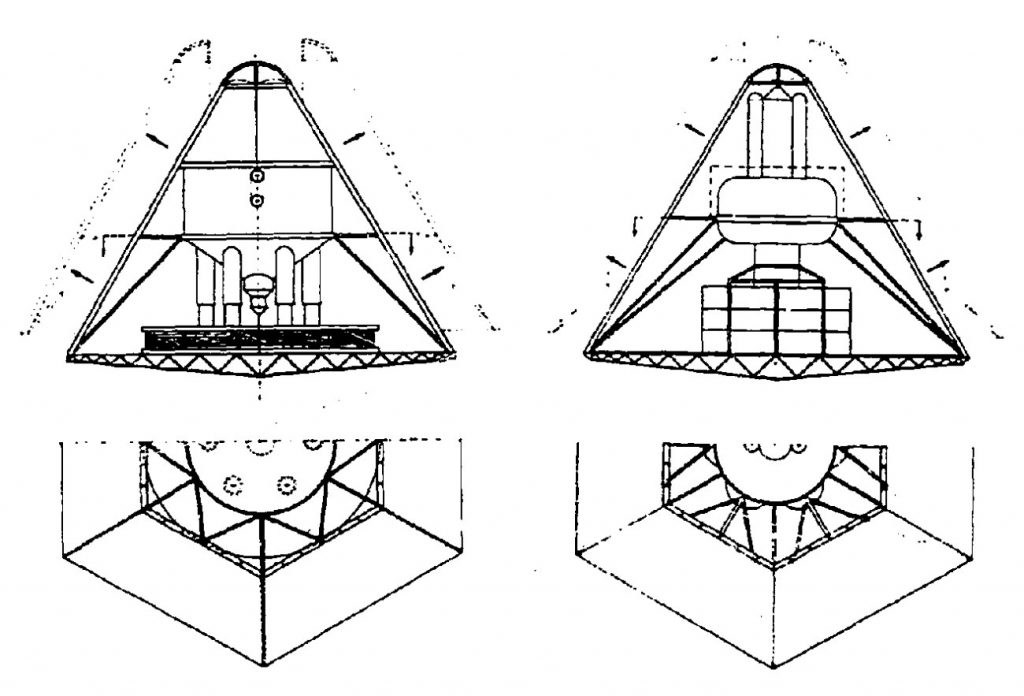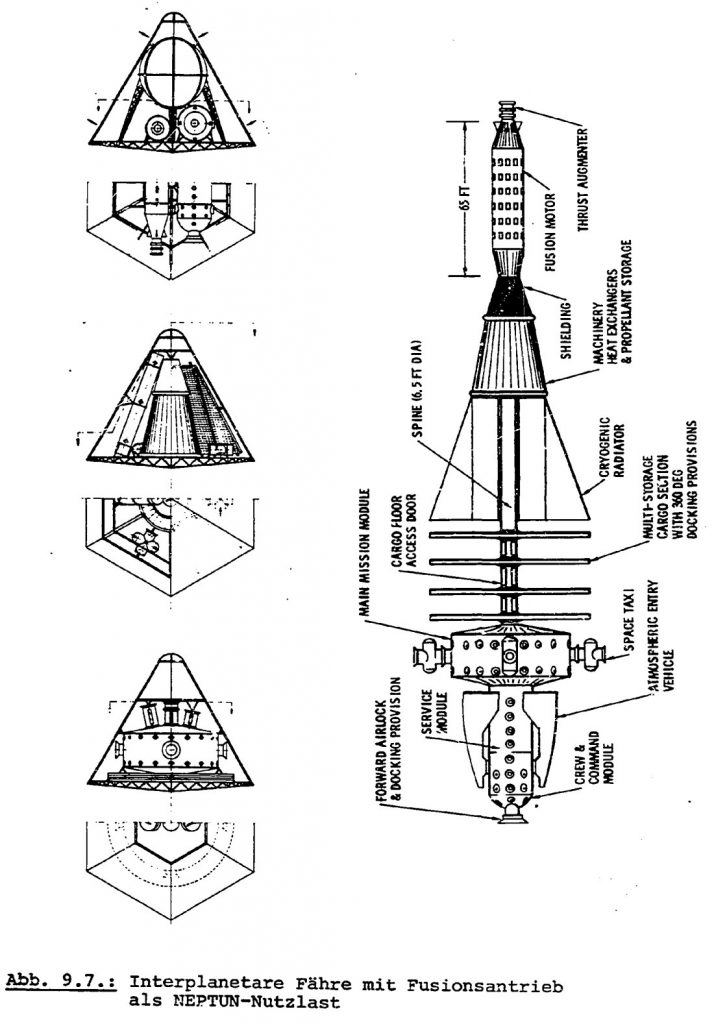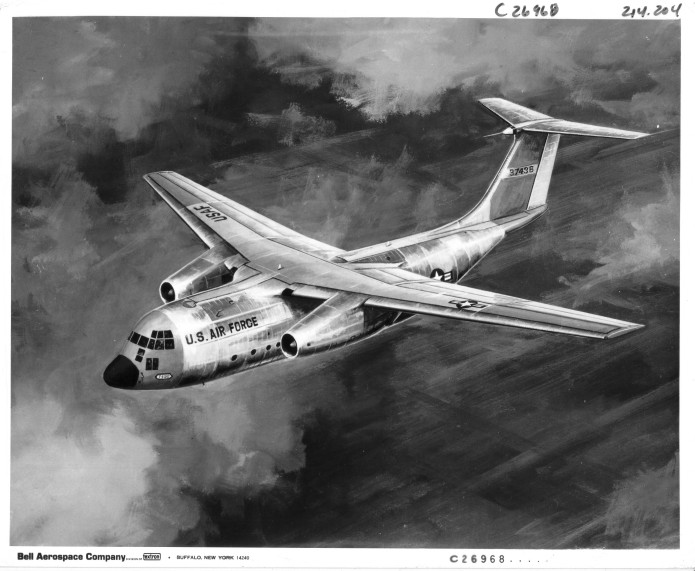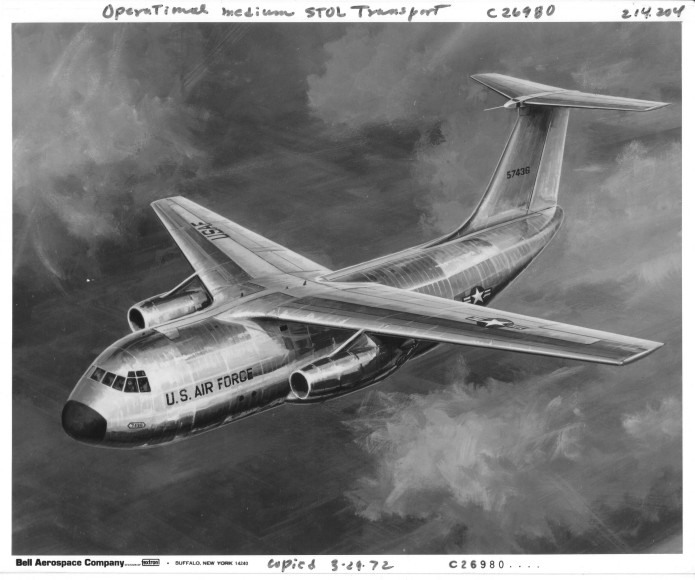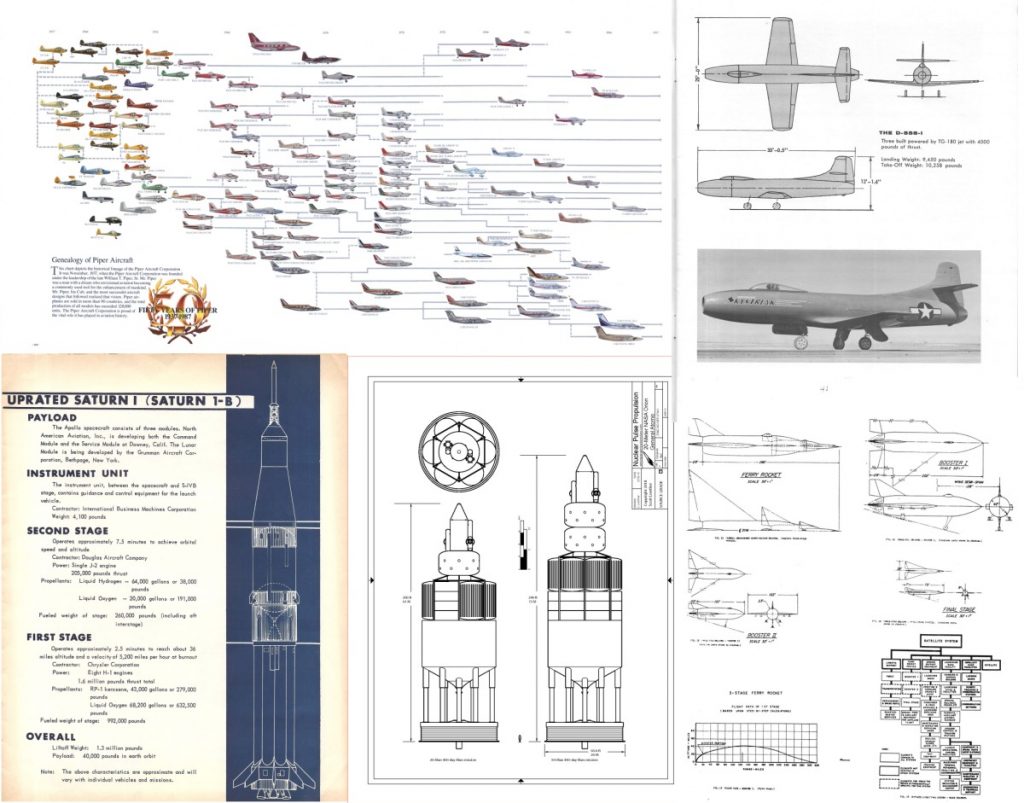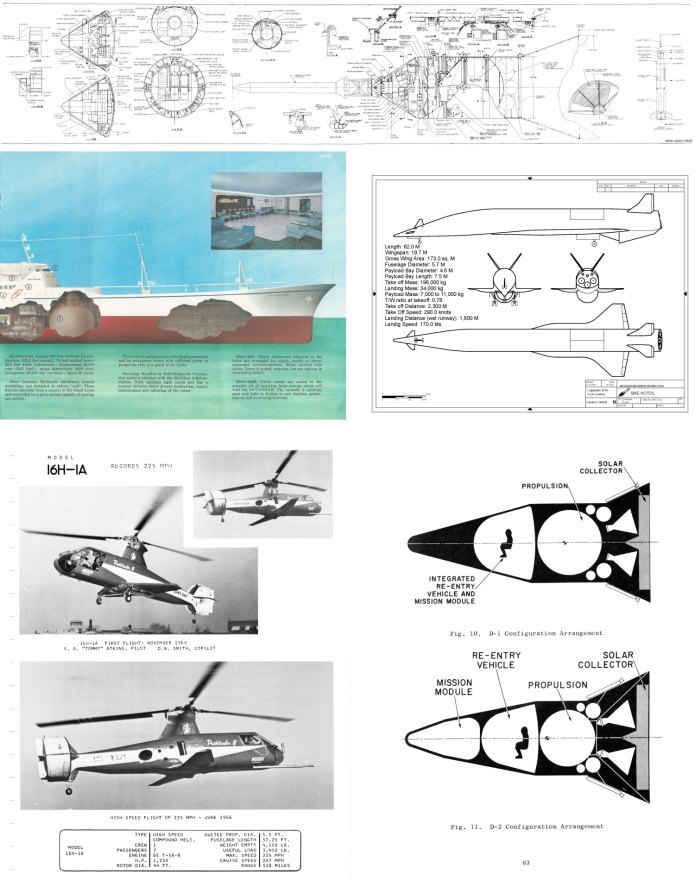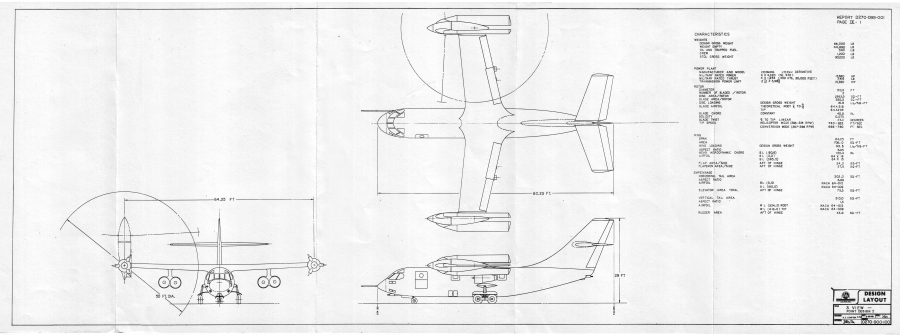For some years I have been operating the “Aerospace Projects Review Patreon” which provides monthly rewards in the form of high resolution scans of vintage aerospace diagrams, art and documents. This has worked pretty well, but it seems that perhaps some people might prefer to sign on more directly. Fortunately, PayPal provides the option not only for one-time purchases but also monthly subscriptions. By subscribing using the drop-down menu below, you will receive the same benefits as APR Patrons, but without going through Patreon itself. The APR Patreon itself will continue; this is just an alternative for those who wish to go a different route.
In the late 1960’s H.H. Koelle of the Technische University Institut Fuer Raumfahrttechnik in Berlin devoted considerable effort to studying a reusable heavy lift launch vehicle. A good, well-illustrated report was put out in 1968 covering the design:
Entwurfskriterien fur groBe wiederverwendbare Tragersysteme (Design Criteria for Large Reusable Space Transportation Systems)
Note that the Neptun was *gigantic.* It was a two-stage ballistically recovered design, unusual in that rather than being circular in cross-section it was hexagonal. The individual propellant tanks were each the size of or bigger than the S-IC first stage of the Saturn V.
A number of payloads were proposed. One was a sub-orbital intercontinental passenger transport, The passenger “capsule” would land separate from the Neptun itself.
One of the more interesting payloads contemplated was a large Orion nuclear pulse vehicle, transported in two pieces (propulsion module in one launch and payload/pulse units in the other). Presumably this would be a NASA Orion hitching a ride on a West German booster; I suspect politics would have negated the likelihood of the West Germans developing a mass production line for nuclear explosives.
This fusion-powered interplanetary spacecraft is also a NASA design, dating from the early 1960’s.
Support the APR Patreon to help bring more of this sort of thing to light!
In 1972 Bell designed a STOL jet transport, a concept that competed for the Advanced Medium STOL Transport role that the McDonnell-Douglas YC-15 and the Boeing YC-14 were built for. The Bell aircraft appeared to be largely conventional in layout, but it was actually quite different from every other transport: the engine nacelles were not only fitted with Harrier-like thrust vectoring nozzles to redirect the core exhaust, the flow could be diverted from the fans to augmenters in the wings. These, it was hoped, would greatly increase static thrust, allowing the aircraft to lift off from unimproved runways in a short distance. As part of their proposal, Bell also designed a proof of concept demonstrator to be built from parts of a C-130. The demonstrator could itself be used as a fair cargo transport, though of course it would not be as well optimized as the all-new vehicles. Unfortunately, the augmenter-wing concept for vertical thrust turned out to be a major disappointment as it steadfastly refused to scale up well.
The demonstrator was recently diagrammed and described in detail in US Recon & Research Projects #03, and the operational version in US Transport Projects #08.
USRP #3 can be downloaded as a PDF file for only $4.25:
USTP #8 can be downloaded as a PDF file for only $4.25:
I’ve uploaded the full rez versions of these scans to the 2018-11 APR Extras folder on Dropbox, available to all APR Patrons at the $4 level and above. If this sort of thing is of interest, please consider signing up for the APR Patreon.
In June 1973 Rockwell put together a short course – presumably or employees new to the STS program – that described the Space Shuttle system as it was then designed. There were a number of clear differences between the STS of the time and the STS as actually built. Differences included a forward extension of the OMS pods, continuing well onto the cargo bay doors. Also, the forward RCS thrusters on the sides of the nose were contained behind sizable doors to protect them during re-entry, a protection that was found to be unnecessary. There were also important differences with the SRBs and ETs.
I have made the full-rez scan of the document available to $10+ APR Patreon patrons. If this sort of thing is of interest, please consider signing up for the APR Patreon.
This is what a manned mission to Mars dating from the late Apollo era would have looked like: a cluster of hydrogen tanks with a small number of NERVA nuclear rockets. The spacecraft would have been relatively gigantic as it leaves Earth orbit; large enough that it would have been assembled in space from at least six Saturn V launches. When it returns to Earth it would have been little more than the mission module; this would blast past Earth and continue in solar orbit while the astronauts and a few trifling hundreds of pounds of Martian souvenirs would have plowed into Earths atmosphere in a compact entry capsule. The mission module itself is described fully and heavily illustrated in US Spacecraft Projects #3.
I’ve uploaded the full rez versions of these renderings to the 2018-11 APR Extras folder on Dropbox, available to all APR Patrons at the $4 level and above. If this sort of thing is of interest, please consider signing up for the APR Patreon.
I’ve just sent out the rewards for October, 2018, to APR Patrons. This months rewards include:
CAD diagram: 20-meter Orion spacecraft
Diagram: Genealogy of Piper aircraft
Document: “Story of the Uprated Saturn I” NASA-MSFC brochure circa 1966 describing the Saturn Ib, including future possibilities
Document: “Preliminary Design Study of a Three Stage Satellite Ferry Rocket Vehicle,” 1954 Goodyear paper describing the METEOR launch vehicle. First of a number of METEOR documents I have.
Document: “The Rocket Research Aircraft Program 1946-1962,” Edwards AFB booklet describing the various rocket aircraft tested up to the x-15
If this sort of thing is of interest, please consider signing up for the APR Patreon.
Patrons of the Aerospace Projects Review Patreon received last month:
Diagram: A foldout diagram of an Apollo-derived logistics spacecraft
Document: “The Piasecki Story,” an illustrated history of the company and its products
Document: “The N.S. Savannah,” a brochure about the sole nuclear powered merchant vessel
Document: “Lunar Spacecraft Design” A paper describing the evolution of the General Electric Apollo design, quite similar to the later Soyuz spacecraft
CAD diagram: 1985 design of the British HOTOL spaceplane
If this sort of thing is of interest, please consider signing up for the APR Patreon.
The Lockheed L-2000 was a Mach 3 SST designed to compete against the Boeing 2707 in the mid 1960’s. It was an elegant and classy looking design, but was passed over by the US Government in favor of the Boeing design. Lockheed built a full scale and reasonably convincing mockup of the craft, using it for both study and PR purposes.
The L-2000 looked like nothing quite so much as a cross between the Concorde and the SR-71.
A full rez scan of the 8X10 glossy has been uploaded to the 2018-09 APR Extras folder on Dropbox for APR Patreon patrons at the $4 level and above. If this sort of thing is of interest, please consider signing up for the APR Patreon.
It has been *years* since I have released any “Air & Space Drawings & Documents,” high rez scans of vintage aerospace items. At last, I’m adding new items. The complete catalog can be seen HERE.
New items. Each are available for $4.
Air Document 27: “Design Study for an Air Force Model F-82E Airplane Modified to a Ground Attack Airplane” A 24-page study from 1949 for a twin-bodied F-82 modified with Allison turboprop engines. The engines would be mounted in the mid-fuselage, about where the cockpits originally were; the cockpits would be moved forward to compensate. The document, taken from a vintage copy printed from microfilm, includes numerous diagrams and B&W art.
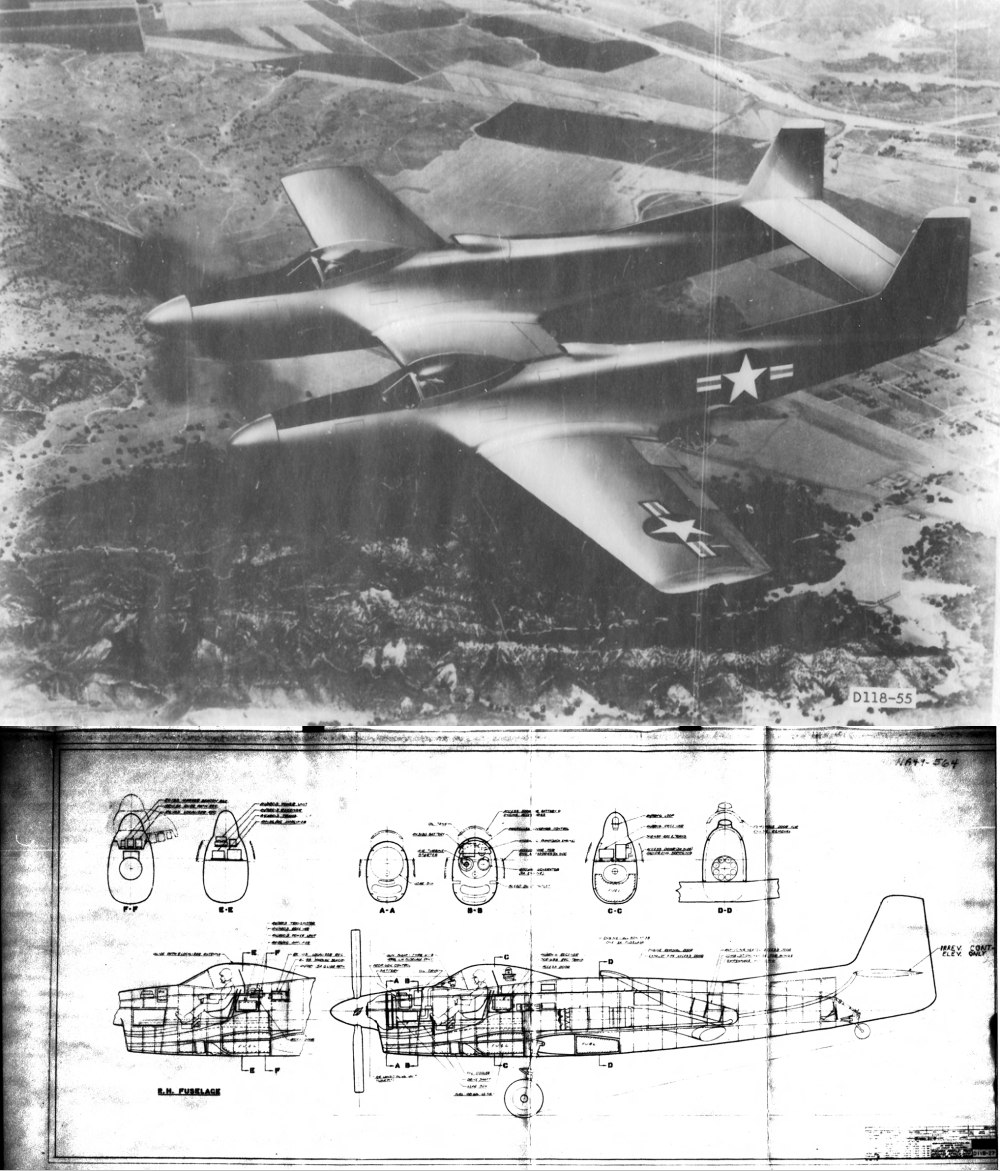
Air Document 28: “This Is The Life With Lockheed” A 36-page booklet produced by Lockheed, Georgia Division, showing the wonders of working there in 1959. Includes not only descriptions and photos of the local environment and amenities but also photos of Lockheed facilities, products and projects. An interesting view of a very different era.
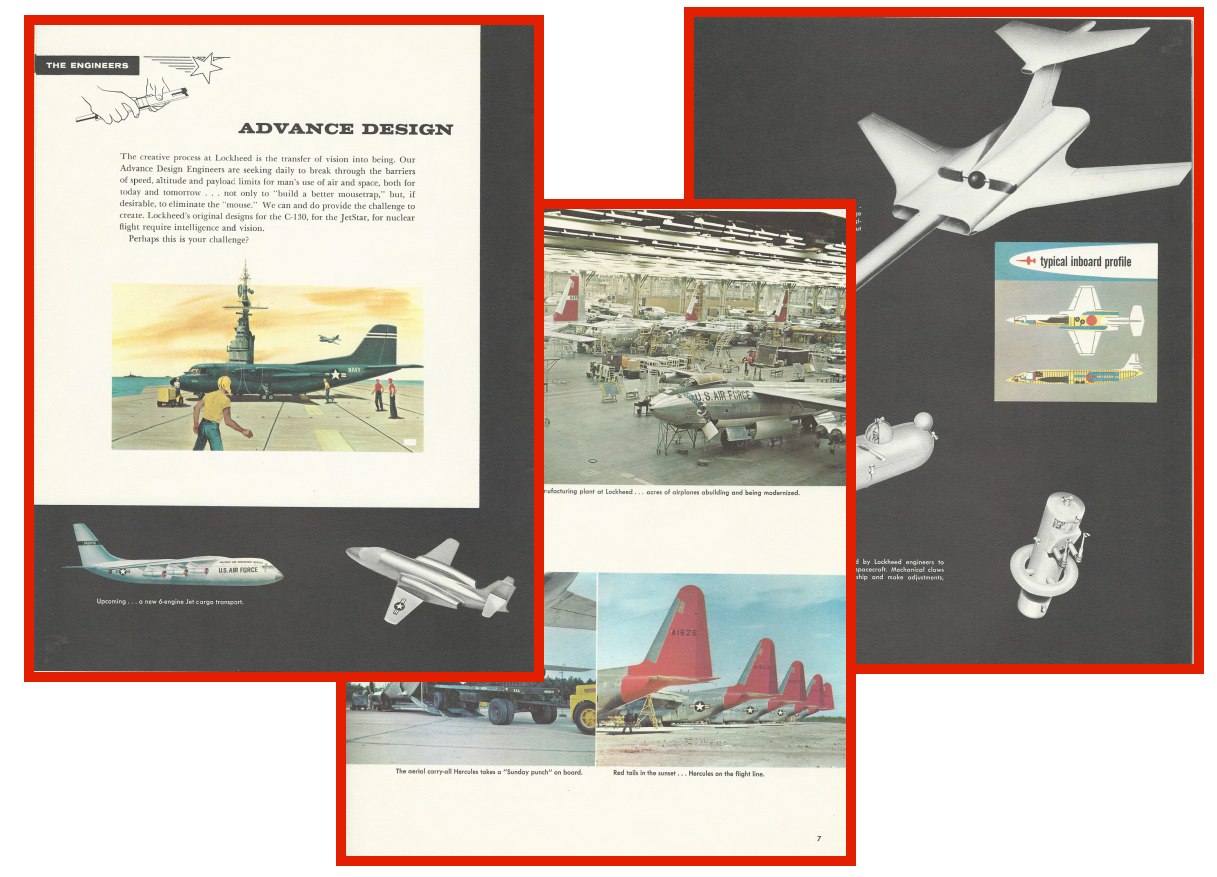
Air Document 29: “SAM-D Air Defense Weapon System” A 1973 Redstone Arsenal information booklet on the Surface-to-Air Missile, Development, which became the “Patriot” anti-aircraft/ anti-missile missile. The booklet describes the various elements of a SAM-D deployment.

Air Document 30: “V-397 (Regulus II) Summary Report” A 42-page 1955 Chance-Vought report on the Regulus II supersonic cruise missile. Includes data and glorious diagrams on the tactical missile as well as the flight test vehicle with landing gear. Scanned from a vintage printout from microfilm.
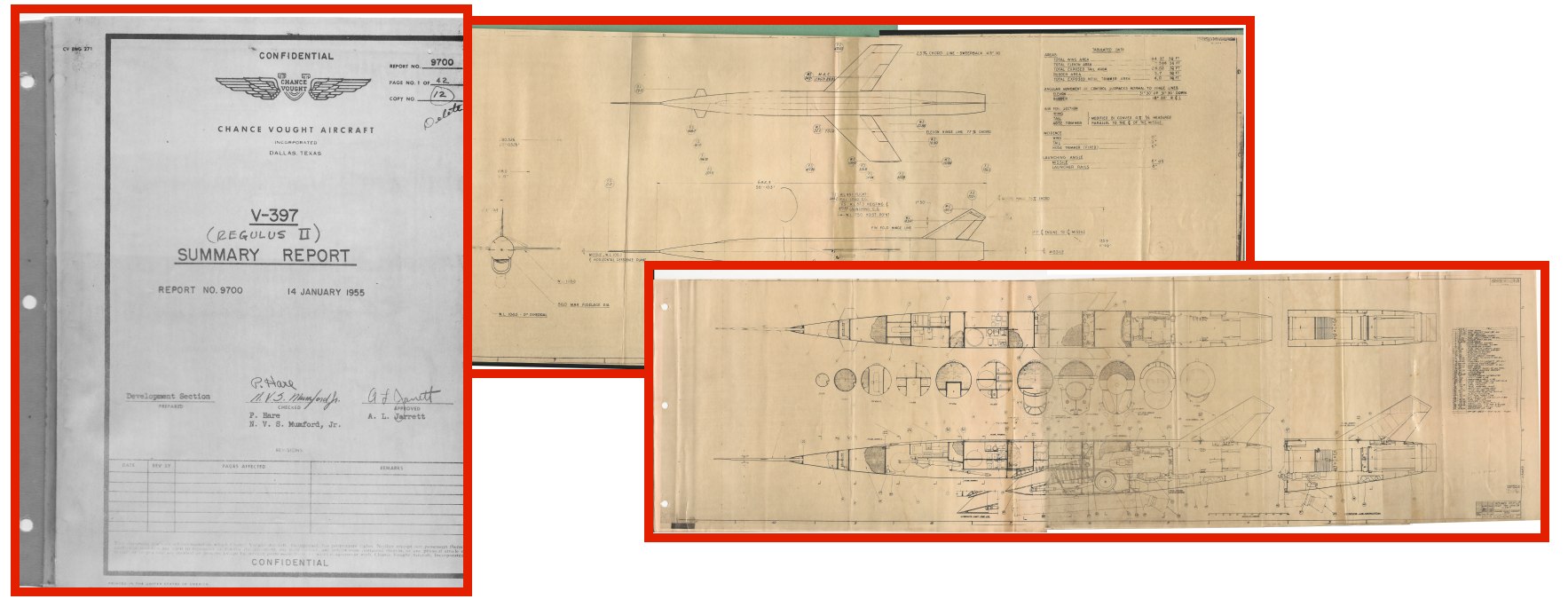
Air Document 31: “Republic XF-103 data” Dating from the mid-50’s, this collection of data and diagrams of the Mach 3+ XF-103 interceptor comes not from Republic, but from Lockheed. A rare look into corporate “competition data gathering,” this 21-page data file shows the sort of information that Lockheed put together on the designs put forward by their competitors.
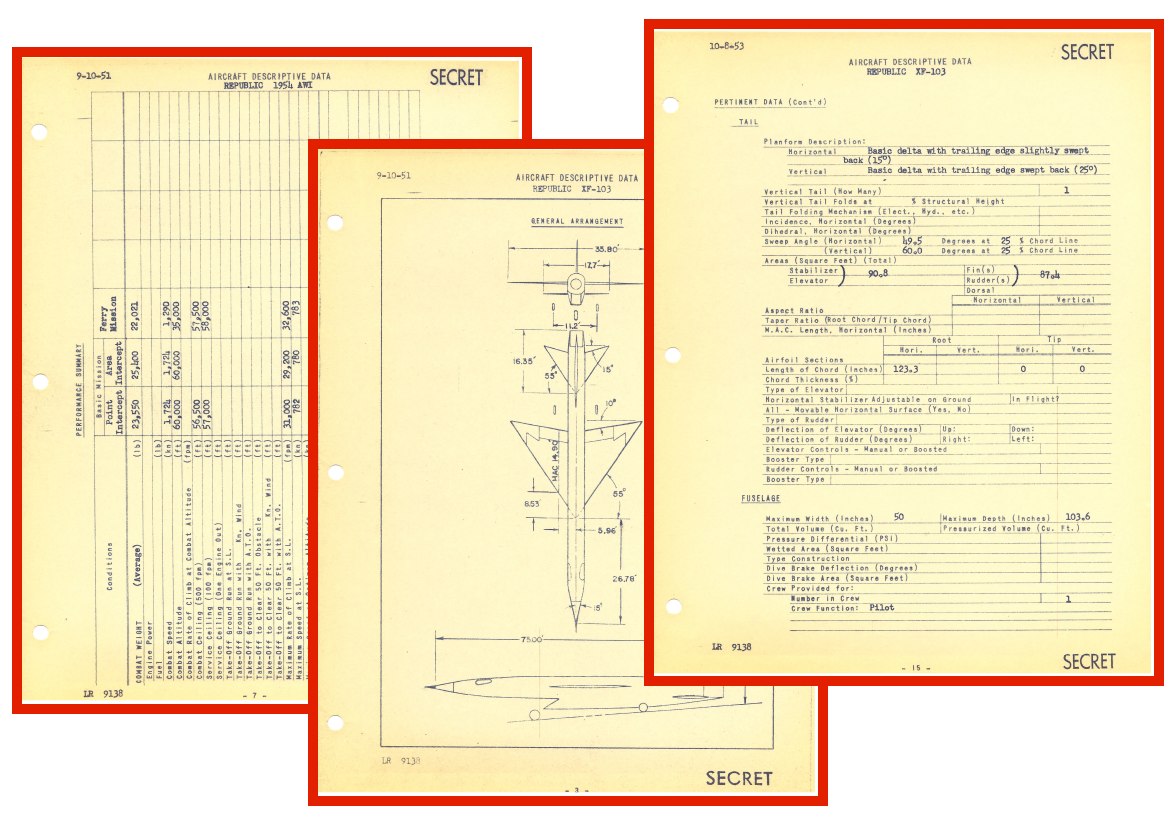
Several of these were released *four* *years* ago to patrons of the Aerospace Projects Review Patreon. Patrons receive items such as these at a low cost and years earlier than waiting for them to appear on the Drawing & documents catalog… and most of the Patreon items *won’t* appear here.
If this sort of thing is of interest, please consider signing up for the APR Patreon.
A 1969 Bell Helicopter design for a high speed stowed-rotor tiltrotor. This was meant for USAF search and rescue and featured gun turrets fore and aft (each with a Minigun) and four turboshaft engines under the wings. Doubtless the gearing from the engines up through the pylons and along the wings to the nacelles would have been an engineering nightmare. But if it worked, it would have resulted in a tiltrotor with the hover performance of the V-22 and a cruise speed of 400 knots.
An article on the similar D270-900-112 (the main visual difference being that the engines were separately podded) was included in US VTOL Projects #1.
I have made the much-larger full-rez scan of the cutaway available to $10+ APR Patreon patrons. If this sort of thing is of interest, please consider signing up for the APR Patreon.
